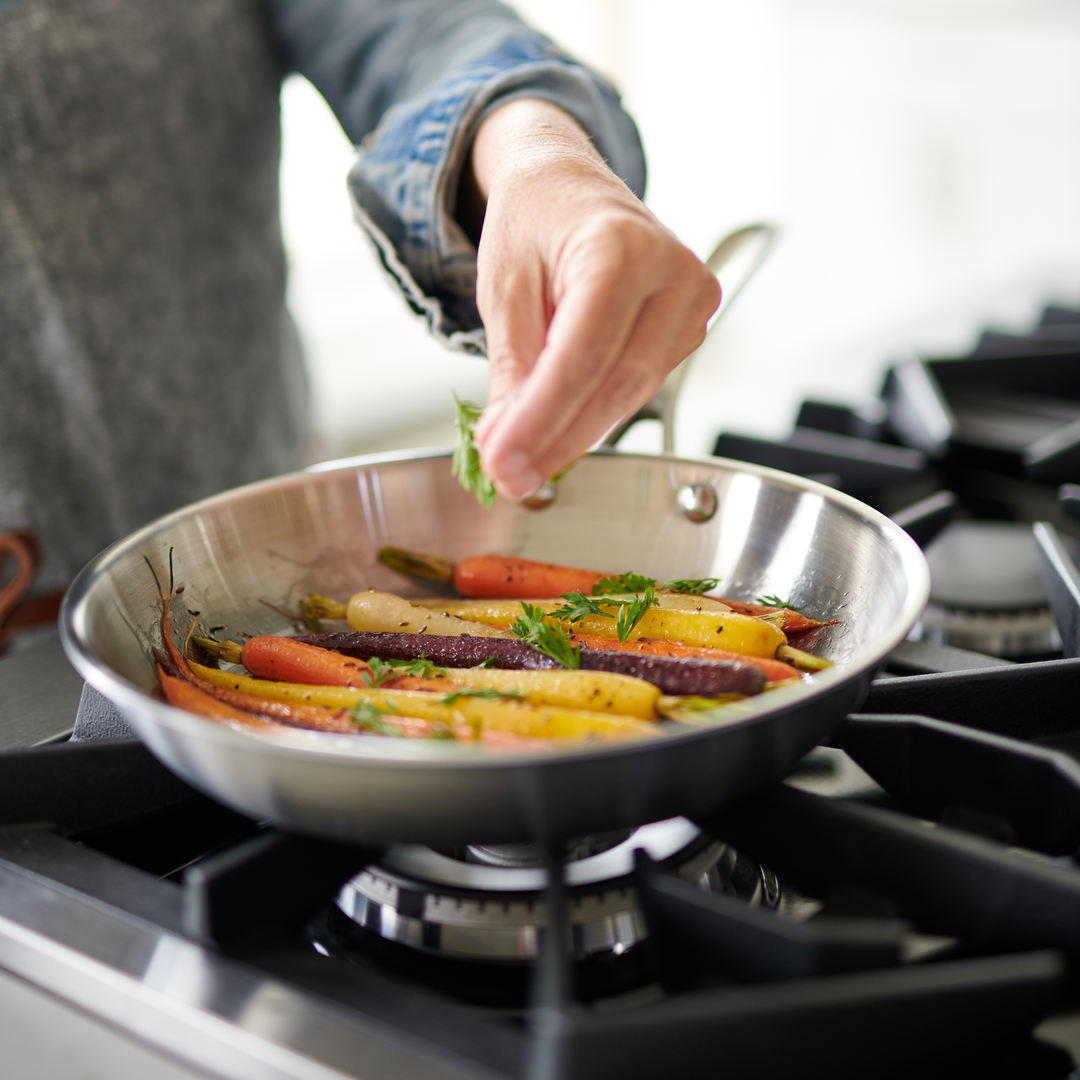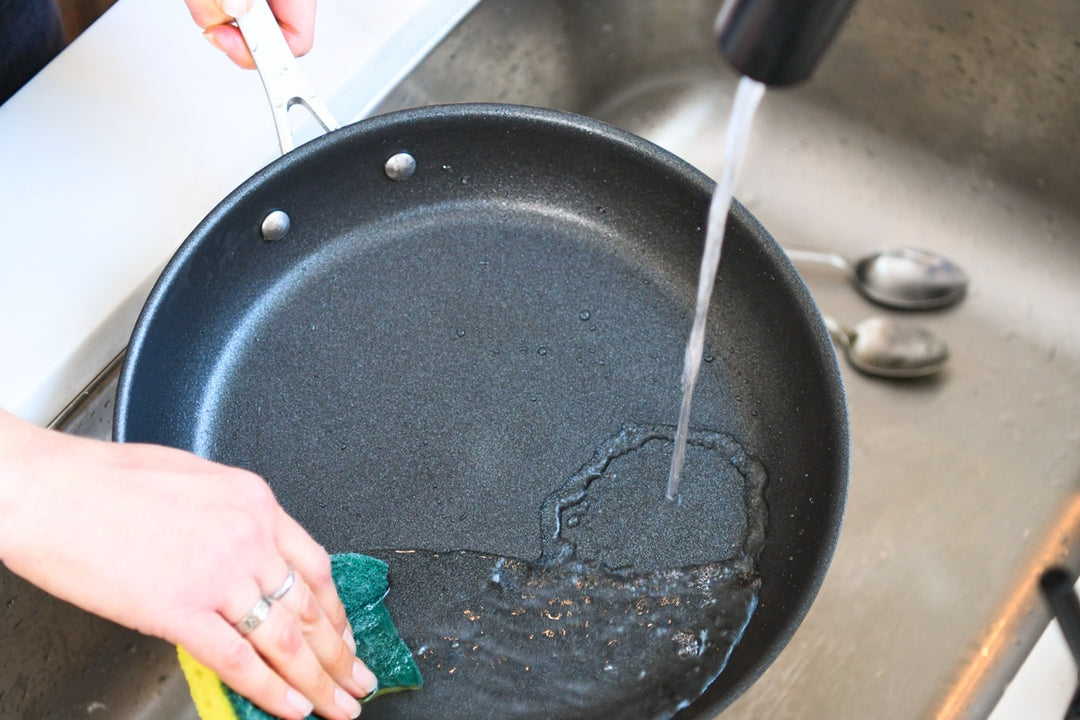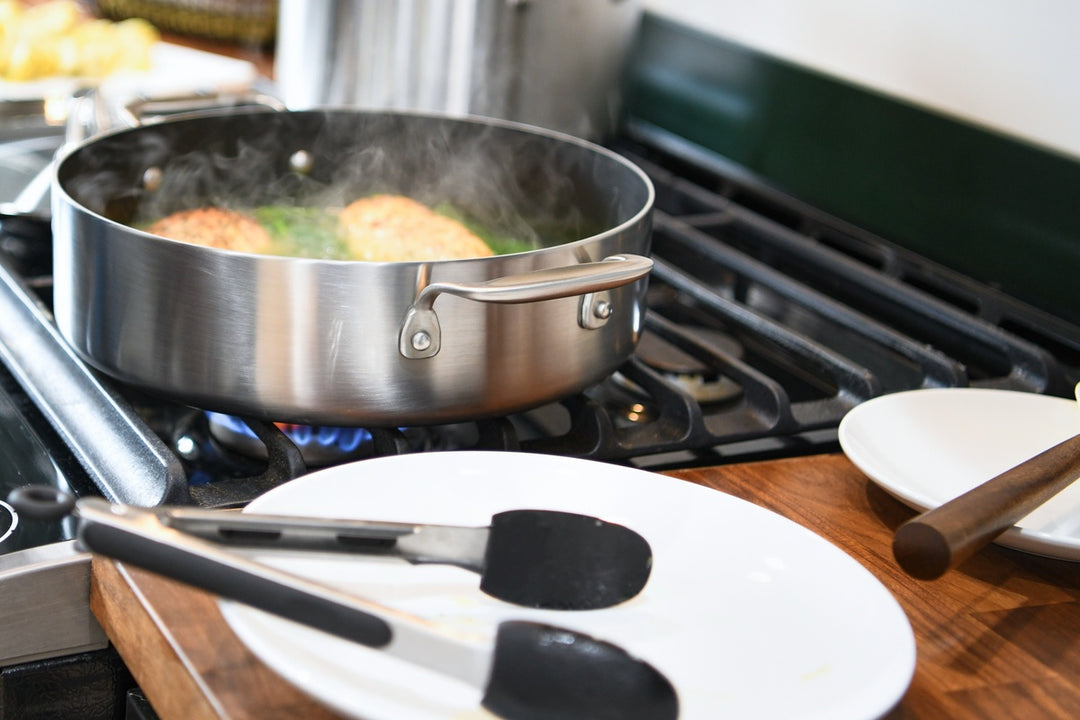How to Use & Care for Stainless Steel Cookware
A set of high quality stainless steel pots and pans is like finding the holy grail. Once you have some you love, never let them go. With proper TLC, they can last for years to come. Here’s everything you need to know to prep, clean and maintain your stainless steel collection.

Prep
Out of the box, stainless steel is beautifully shiny and almost too pretty to use — almost. But before you use those pans for the first time, wash them in warm soapy water with a little vinegar (about 1/4 cup). This removes any oils left over from the manufacturing process so you’re starting fresh.
Clean
For everyday cleaning, all you need is a soft cloth and dishwashing soap. But for those stuck-on messes (think the rice that you waited too long to stir), the last thing you want to do is tackle them with metal scrubbing pads, steel wool or abrasive cleaners.
Instead, soak your pan in warm soapy water before trying to scrub. You can also try baking soda or Bar Keepers Friend to keep your stainless steel looking as good as the day you bought it.
Maintain
Our stainless steel cookware is better than the competition (humble brag!) — they’re the pieces you’ll treasure for years because they’re built to last. But everyone could use some extra tips and tricks.
- DON’T cut or carve in your cookware because it can scratch. Instead, use a cutting board.
- DO use utensils made from wood or silicone. (read: best utensils for stainless steel)
- DON’T turn the heat up too high. Most cooking should be done on the low to medium range. If you see signs of discoloration from turning the heat up too high, a stainless steel cleanser will do the trick.
- DO let your cookware cool down before cleaning. Placing a hot pan in cold water can cause the metal to warp, making the bottom uneven.




